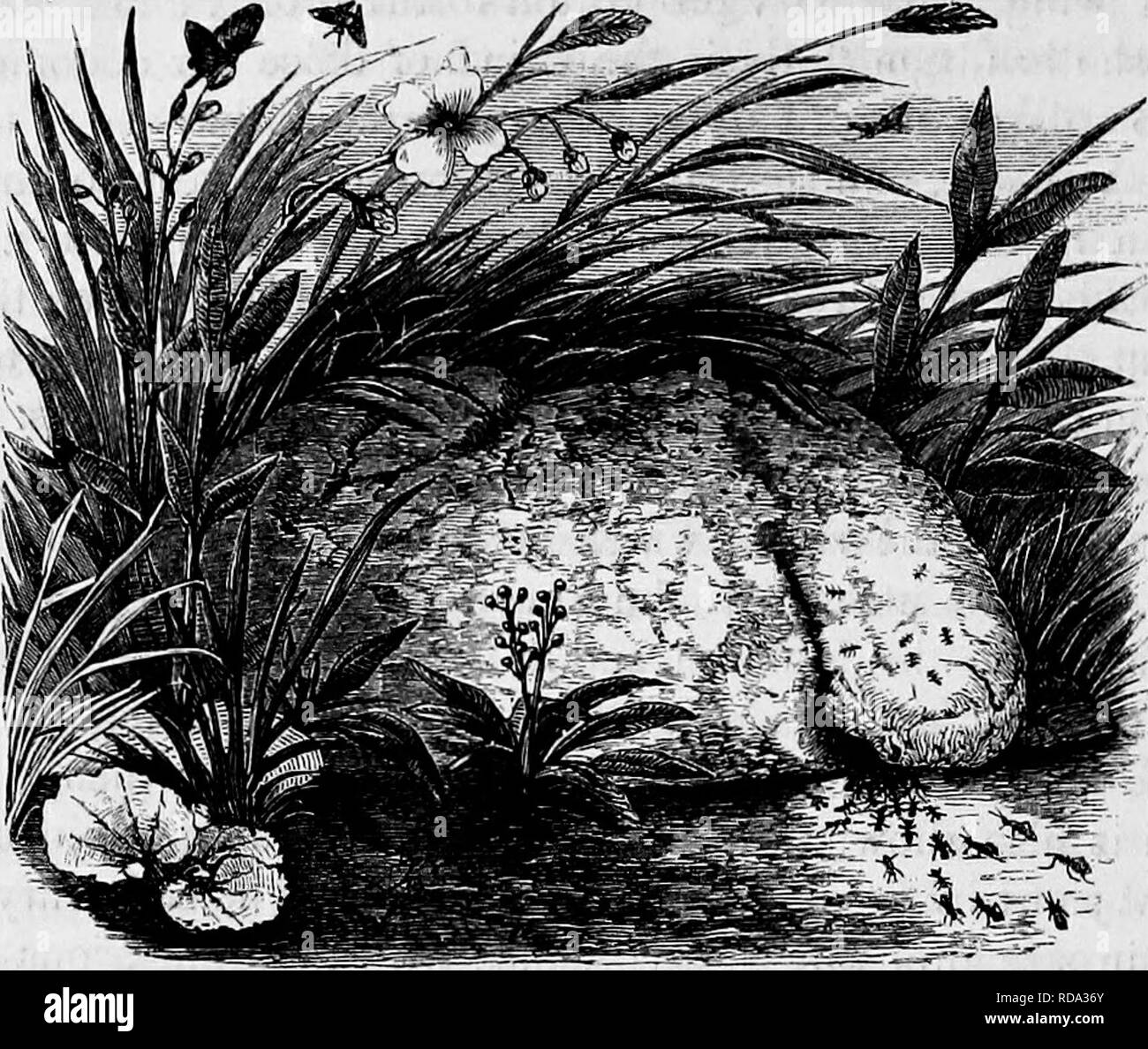. Homes without hands : being a description of the habitations of animals, classed according to their principle of construction . Animals. 624 HOMES WITHOUT HANDS.. Fuogus Ant. These ants, however, find the fibre useful for their â work,aijd contrive to weave it so dexterously that the individuality of the fibres is lost, and they are all made into a compact and uniform mass. The size of the nests varies, but is sometimes very consid- erable, a full-sized nest being often as large as a man's head. The ant itself is rather a curious little creature, dark in color, covered with many angular prot

Image details
Contributor:
The Book Worm / Alamy Stock PhotoImage ID:
RDA36YFile size:
7.1 MB (574.1 KB Compressed download)Releases:
Model - no | Property - noDo I need a release?Dimensions:
1719 x 1453 px | 29.1 x 24.6 cm | 11.5 x 9.7 inches | 150dpiMore information:
This image is a public domain image, which means either that copyright has expired in the image or the copyright holder has waived their copyright. Alamy charges you a fee for access to the high resolution copy of the image.
This image could have imperfections as it’s either historical or reportage.
. Homes without hands : being a description of the habitations of animals, classed according to their principle of construction . Animals. 624 HOMES WITHOUT HANDS.. Fuogus Ant. These ants, however, find the fibre useful for their â work, aijd contrive to weave it so dexterously that the individuality of the fibres is lost, and they are all made into a compact and uniform mass. The size of the nests varies, but is sometimes very consid- erable, a full-sized nest being often as large as a man's head. The ant itself is rather a curious little creature, dark in color, covered with many angular protuberances, and being remarkable for a couple of long, sharp spines that project from the thorax, one on either side. Its scientific names, Polyrachis bispinosa, are given in consequence of these projections, the first name being composed of two Greek words signifying many-peaked, and the second being formed from two Latin words signifying two-spined. There are many insects whose habitations are peculiarly an- noying to mankind, and yet are extremely interesting to those who take an interest in the workings of instinct. Chief among these insects is the well-known Clothes Moth. There are sev- eral allied species which popularly go by this name, but the most plentiful is that which bears the scientific title ot Tinea vestianella. These destructive little creatures are proverbially injurious to clothes, especially if the garments be made of wool or furs, vege- table fabrics being not to their taste. Some species affect dried insects, and are, in consequence, extremely baleful to the entomol-. Please note that these images are extracted from scanned page images that may have been digitally enhanced for readability - coloration and appearance of these illustrations may not perfectly resemble the original work.. Wood, J. G. (John George), 1827-1889; Keyl, Friedrich Wilhelm, 1823-1871; Smith, E. A. (Edward Alfred); Pearson, G. (George). New York : Harper & Brothers